Fifth time around for Chris Nicholson
Going to a one design for this Volvo Ocean Race will make for a closer competition between the entire fleet, but has also had the beneficial effect of allowing 11th hour entries not only to make the start line, but in a potentially competitive way.
The seventh entry in this Volvo Ocean Race was a long time in gestation. In fact the fight was to find someone to take the sixth boat off the Green Marine production line (ie not the last - hull #7 is MAPFRE). Rumour has it that hull #6 was originally destined for a private Dutch owner to take in the race. However when that fell through the Volvo Ocean Race organisers brokered their second team sponsorship deal of the race (after Alvimedica), this time with Danish wind energy company Vestas (one time backer of Paul Larsen’s SailRocket campaign), the new team formally announced only in mid-August, just two months out from the race start.
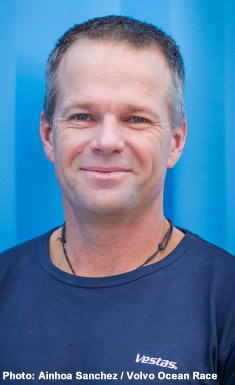
Having been poised to be part of an Emirates Team New Zealand-Pedro Campos joint venture team that came to nothing earlier in the year, Chris Nicholson was the obvious choice to skipper Team Vestas Wind. This is Nico’s fifth Volvo Ocean Race, the former 49er World Champion having started his round the world racing career in 2001 with Grant Dalton on Amer Sport One and followed it up with movistar and Puma before skippering the Team New Zealand crew on Camper three years ago.
On the Team Vestas Wind crew are a mix of extremes, from the highly experienced to complete first timers. Among the former are Camper returnees Tony Rae and Rob Salthouse while Wouter Verbraak is on board as navigator, who sailed his first race with Knut Frostad aboard the VO60 djuice dragons and was then with Pirates of the Caribbean. Along with Bouwe Bekking, Rae is the longest serving competitor in this race - his first lap was aboard Lion New Zealand in 1985.
Part of the Vestas sponsorship deal was the requirement that the crew include two Danish under 30s. So at the opposite end of the round the world racing experience spectrum are Nicolai Sehested and Peter Wibroe, both young and talented match racing skippers.
“I was always going to take one of them,” says Nicholson. “I’d sailed with Nicolai on the Melges 32 [the Japanese boat, Swing] for a season and thought he had everything required to do a Volvo, so it is nice how sometimes things line up for you nicely… Honestly I couldn’t fault them at this stage in anyway. They are really going well.”
The crew’s final appointment was Argentinian Maciel Cicchetti, who Nicholson had also previously met on the Melges 32 circuit and had VOR ‘previous’ in 2008/9 aboard Telefonica Black. “I’d only sailed with him once,” admits Nicholson. “But you just know straight away – someone who is so on to the trim, the set-up of the boat and constantly pushing. He is one of the most sought-after trimmers in the world.”
So how did the recruiting policy change for this race? “I looked for one design mentality,” says Nicholson. “I guess previous races I was always keen on Olympic mentality and discipline. I think quite often one design and the Olympic disciplines are almost identical in regards to the fine technique trimming and steering, where there is super accuracy. Then on top of that I am hoping that with Nicolai and Peter's match racing backgrounds, we have a crew that works well in really tight boat-on-boat situations.”
Having good drivers was also of paramount importance and of the eight crew, Nico reckons six will be steering.
Another significant piece of the Team Vestas Wind personnel puzzle is Neil Cox running the shore side. This is the third campaign Nicholson and Cox have worked together following on from Camper and before that Puma. For this race Cox was deeply involved in the production build of the VO65s at Green Marine.
"Both he and I had to think long and hard about if this is what we wanted to do in terms of how difficult it would be with the lack of time,” says Nicholson. For in addition to the time constraints, Nicholson believes that Team Vestas Wind is also the lowest budget campaign in this year's event, best demonstrated by the team having a shore crew of just three, whereas the bigger teams typically have six or more. Because of this the sailing team has to take a more active role in maintaining the boat and there has been little chance for any of the crew to take time off from some much needed R&R since climbing on board their new steed in Southampton.
Nicholson reiterates that such a late campaign is only possible thanks to the VO65 being one design. “That obviously takes out so much of the worry both for us, but especially for the sponsor. Before when a sponsor did their due diligence, they would go ‘we need x amount of time, x amount of money and we need to have the best designer in the world. If we don’t have all those three, we don’t have a chance.’ Whereas now they go ‘the designer and boat and to a large extent time is now removed. Now it just comes down to the sailing team.' So they end up with a much higher degree of confidence and to be honest, so do we as the sailing team.”
But going into tomorrow’s start, Team Vestas Wind will have had just 15 days on the water. Some of her competitors have six times the amount of miles under their keels. There was elation in the team when it won Leg 0, from Alicante around Majorca and back. However in last Saturday’s in-port off Alicante, despite leading for part of the race, they ended up coming home a disappointing last. Nicholson explains: “The reason that happened was because we made several mistakes, pushing too hard and then there were several mechanical errors and that is just an indication of not enough time together as a team. We made enough of a meal of it to go from first to last, but as I said to the guys afterwards, we are close to a coming together, but seeing how little we’d had on the water I really can’t complain too much.
"Saying that, going into the in-port race I didn’t think we were too much on the back foot. What we have achieved I thought was far in advance of what I thought possible. So the in-port race was a little reality check - we weren’t as far advanced as what I thought. What I am confident of is that we will get there.”
So what will make the difference in this race? “Always in one design sailing, some people are faster because they sail the boat harder, they work out the intricacies of the boat earlier and they are more refined. We saw that in leg 0 – some of the guys have got faster modes than others. In fact it is similar to the VO70 when you’d be faster than another boat at a certain angle because of your design – that is still going to be the case, but because of the crew make-up and the set-up of the boat. However the differences should be less, so the racing will be closer.”
Having sailed three races in the VO70s, Nicholson says that the 65 is quite a different animal. “The VO70 was so powerful and it was all custom-designed so you were involved in every little component and I really enjoyed that boat. But my background has always been in one design racing and it [the VO65] seemed like a step back for me - everyone had told me that the boats were easy to figure out and I thought ‘that’s not going to be very challenging…’ However I think the boats are really responsive to good drivers, good trimming and smart people, which I think is ideal to make it a sailors’ race. It is quite a dynamic boat. I think the Farr office has done really well with what they have come out with.”
According to Nicholson fore and aft trim on the VO65 is vital, achieved either by filling the water ballast tanks (1800kg forward on the centreline or two 800kg tanks outboard aft) or by moving the stack. “So you are trying to track down the right combination of those and then there’s the daggerboards the canting keel –so there is lots of different dynamic forces at work.”
The keel pin is angled so that as it swings, it also moves the bulb aft while the foils generates some vertical lift. The combined effect of this is to bring up the bow of the boat. This makes for a much drier ride in big conditions, without the constant deluge of green water propelling its way back into the cockpit, as was the case on the VO70s. However Nicholson says that the VO65s are still very wet boats and for example you still need dry seals on all your gear.
The VO65s are also more tender than the VO70s. “I think the different manufacturers put on a lot of safety margins and in the end the boats ended up a bit heavier than they might have wanted,” Nicholson explains. “They have ended up at 12.5 tonnes, but the fact that there is less lead on the bulb than originally planned which makes it so tippy - I tend to enjoy that more.”
Because of this reduced stability the VO65s are not the power reaching weapons the VO70s were. But while their crews won’t be able to push them as hard on the wind or reaching, they are extremely quick off the breeze. “True downwind, from 130° true to 150°, the boat really goes. I think on the big windy downwind days we are going to do some serious miles - VO70 speeds.”
The reduced righting moment also creates a safety valve for the boat, reducing shock loads, so when a gust hits, the impact is translated more into heel than into boat speed. “It makes the boat tricky to sail, but it lessens all the shock loadings, so I think it is a much smarter option.”
The down side is that the VO65 is more prone to broaching and the resulting breakage this can cause. Nicholson says this is not a problem, it just changes the game and places further emphasis on the quality of the drivers.
So it will be interesting to see how quickly Team Vestas Wind comes into its own. Will it be during leg one or later in the race?

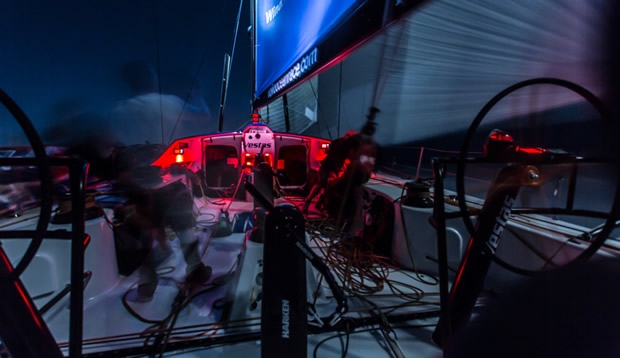
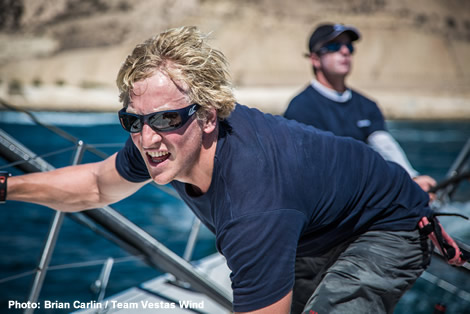
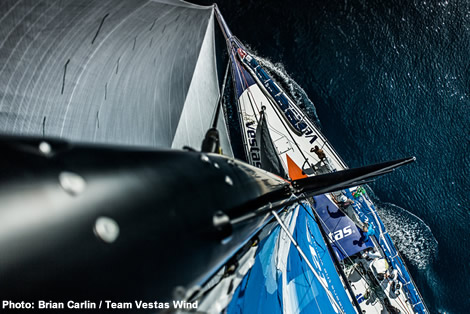
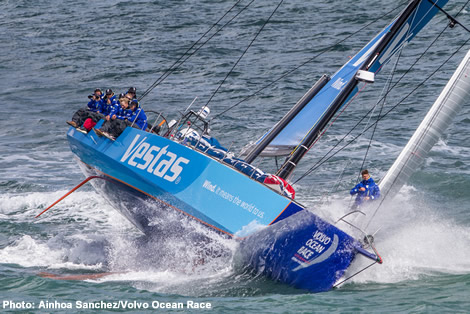
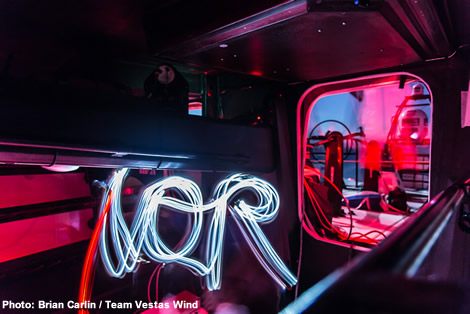
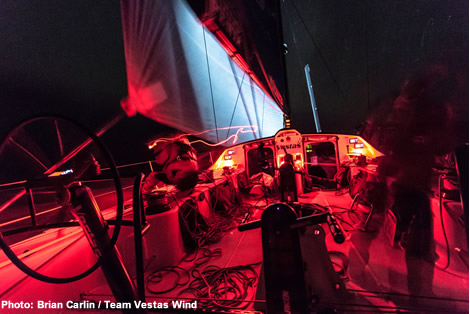
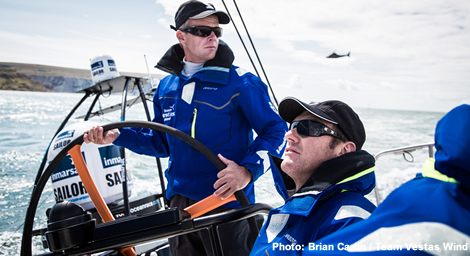
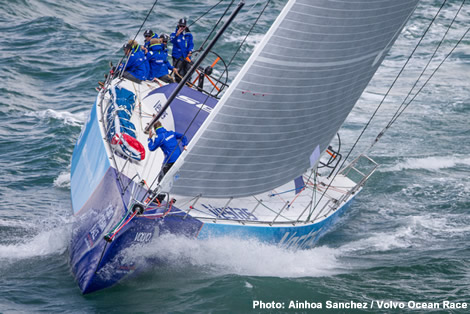
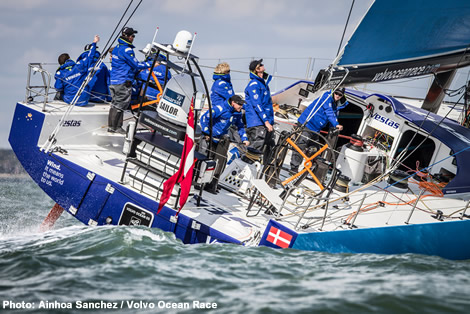
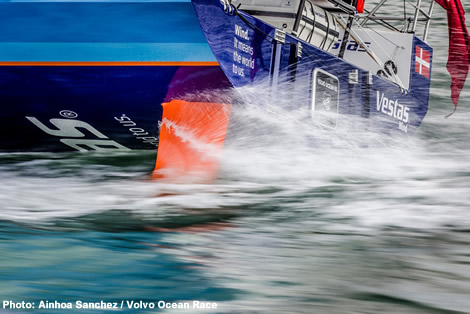









Latest Comments
jt27 10/10/2014 - 18:15
hi James Are you going to be doing the daily updates like in previous ?Add a comment - Members log in